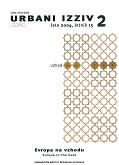Green Belt Europe – nature knows no boundaries
From “Iron Curtain” to Europe’s lifeline
Green Belt Europe – nature knows no boundaries
From “Iron Curtain” to Europe’s lifeline
Author(s): Liana Geidezis, Melanie KreutzSubject(s): Social Sciences
Published by: Urbanistični inštitut Republike Slovenije
Keywords: green belt; iron curtain; Europe; border; lifeline; habitat network; biodiversity; trans-boundary co-operation
Summary/Abstract: The “Iron Curtain” divided Europe for almost forty years from the Barents Sea to the Black Sea. It was a political, ideological and physical barrier, most strongly expressed in Germany. Despite its inhumanity, this border granted nature a pause for breath: nature flourished and developed something extremely rare in intensively used landscapes – the so called Green Belt. Since the fall of the Iron Curtain in 1989, a lifeline of habitats about 8.500 km long runs through Europe. It originated from the project Green Belt Germany, initiated by BUND, the vision of a European Green Belt development. It can become a backbone of an ecological network that is a global symbol for trans-boundary co-operation in nature conservation and sustainable development. Moreover, it connects people and shows that the enlarged European Union has not only a cultural but also a natural heritage. The Green Belt is a unique chance to overcome the old boundaries and barriers between East and West – a living symbol of growing together in Europe.
Journal: Urbani izziv
- Issue Year: 15/2004
- Issue No: 2
- Page Range: 135-138
- Page Count: 4
- Language: English

